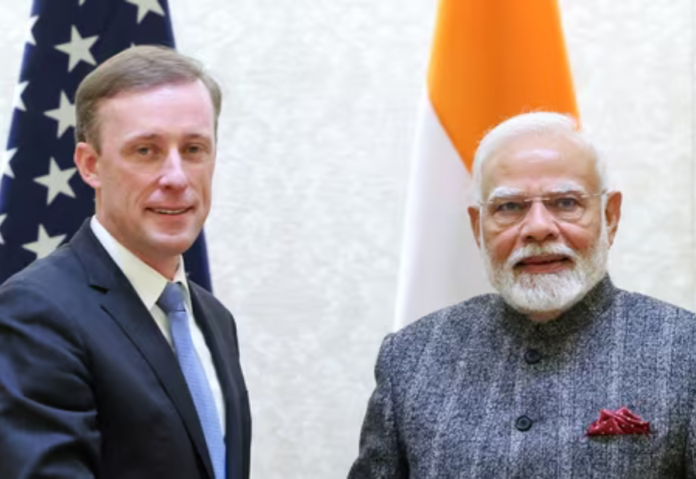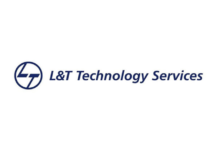US National Security Advisor Jake Sullivan met Indian counterpart Ajit Doval and Indian leadership on his last trip to India this week before Donald Trump takes office. The Biden administration’s emphasis on technology as the focal point of the developing bilateral ties came to an end with this.
The goal of Sullivan’s visit is to provide continuity to the structural links that have changed dramatically in recent years, since it is one of the last high-level meetings between the two countries before the Biden administration ends its term. The visit takes place at a crucial time as both countries adjust to new circumstances and deal with looming conflicts, escalating great power rivalry, and India’s ascent as a major global technological and geopolitical hub.
The Joe Biden administration’s emphasis on tech-driven collaborations has been one of its main features. Under Biden, there was a tech-led drive in the majority of US great power interactions, unlike in the past. The US’s partnership with India grew to encompass a more wide and advanced range of developing technologies, while its relationship with China witnessed a competitive turn in technology.
With the quickly changing global digital environment, the India-US partnership is changing to prioritize tech, defense, space, biotech, and artificial intelligence. One of the most significant frameworks for collaboration under the Biden administration has been iCET, which seeks to improve cooperation in the areas of semiconductors, artificial intelligence, quantum computing, space technology, and defense innovation.
Shared democratic principles, worries over unbalanced digital governance, and the strategic need to challenge China’s increasing technical supremacy are the foundations of the partnership’s technological focus. Sullivan’s visit played a key role in strengthening the current collaboration.
In the technology sector, India and the US have increased their cooperation, especially in the areas of advanced computing, renewable energy, and defense. The introduction of a multi-domain situational awareness solution driven by AI and created by General Atomics and 114ai to improve combined all-domain command-and-control capabilities marks a significant turning point in the defense-industrial collaboration.
The United States has taken action to delist Indian nuclear enterprises in the areas of vital minerals and clean energy, opening the door for improved civil nuclear cooperation and clean energy supply chains. In addition to co-developing processing technologies for lithium, titanium, and vanadium, the alliance investigated supply chain cooperation for vital materials such as graphite, gallium, and germanium after signing an MOU on key minerals. Advanced computing, AI, and quantum computing were also noted as important factors.
A G2G framework that enables mutual investments in AI technology while providing long-term safeguards against the uncontrolled spread of critical AI innovations is being developed. These actions seek to restrict China’s access to vital AI hardware and technology, supporting the safe, secure, and reliable development of cutting-edge innovations. They are also in line with larger US national security interests, especially in light of the National Security Memorandum on AI.
Trump’s return may in some ways alter US-India ties, even if the Biden administration has placed a strong focus on broad-based and institutionalized engagement with India. Priorities within the alliance may change as a result of Trump’s transactional approach to diplomacy and emphasis on bilateral trade deficits. For example, under him, topics like IP rights, tariffs, and market access may become more important.
Nonetheless, the strategic need of halting China’s ascent is probably going to guarantee that technology and India continue to play a major role in US foreign policy. Trump 2.0 may try to make an impression by focusing more on some sectors, including energy trade or defense technology transfers.
The emphasis on technology, defense, and commerce should help to guarantee that the alliance stays strong as the Biden administration gives the final push to institutionalize this relationship, even in the face of the potential for a change in US policy under Trump.
An key milestone in bilateral progress may be reached during the next Quad summit, which India is hosting this year. With member countries concentrating on developing robust supply chains, improving marine domain awareness, and promoting regional connectivity through digital infrastructure, tech cooperation is probably going to continue to be a top priority for the Quad. India may demonstrate its leadership in accelerating the grouping’s momentum by hosting the Quad meet.
The Democratic Party’s link with India would be the continuity bridge that extends beyond current administrations and leaders on both sides as it considers an internal reorganization to reprioritize and identify its next generation of leaders. The combination of India’s strategic rise and US technology superiority provides a convincing road map for overcoming obstacles in a future characterized by great power competition.
Also read: Viksit Workforce for a Viksit Bharat
Do Follow: The Mainstream formerly known as CIO News LinkedIn Account | The Mainstream formerly known as CIO News Facebook | The Mainstream formerly known as CIO News Youtube | The Mainstream formerly known as CIO News Twitter
About us:
The Mainstream formerly known as CIO News is the premier platform dedicated to delivering the latest news, updates, and insights from the CIO industry. As a trusted source in the technology and IT sector, we provide a comprehensive resource for executives and professionals seeking to stay informed and ahead of the curve. With a focus on cutting-edge developments and trends, The Mainstream formerly known as CIO News serves as your go-to destination for staying abreast of the rapidly evolving landscape of technology and IT. Founded in June 2020, The Mainstream formerly known as CIO News has rapidly evolved with ambitious growth plans to expand globally, targeting markets in the Middle East & Africa, ASEAN, USA, and the UK






